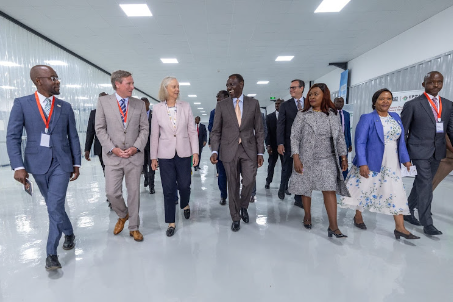The government is demonstrating its commitment to creating an enabling environment for Export Processing Zones (EPZs), as evidenced by recent trends indicating an increase in investor interest in the sector.
This initiative is part of the government’s strategy to leverage private sector EPZs to create jobs for the youth and boost the country’s exports, ultimately improving the balance of trade.
Investments, Trade and Industry Cabinet Secretary Rebecca Miano reported that at least 17 new enterprises have joined the Export Processing Zones Authority (EPZA) programme in the past six months. The EPZA, a state corporation, promotes and facilitates export-oriented investments and develops an enabling environment for such investments.
During this period, four new private zones have been gazetted, contributing a total investment capital of Sh13.8 billion. These zones have also created at least 3,143 local jobs and generated exports worth Sh58 billion.
“With this trajectory, we can be certain that my ministry’s target of attracting investments worth $10 billion (Sh1.3 trillion) in the next five years and 15 per cent growth for manufacturing by 2025 and 30 per cent by the year 2030 is nigh,” Miano said.
To create employment, the government has prioritized investments in Special Economic Zones (SEZs) and County Aggregation and Industrial Parks, along with the diversification of export markets and the market access of goods and services from Micro, Small, and Medium Enterprises (MSMEs).
The National Treasury has proposed an allocation of Sh23.7 billion in the 2024-25 budget to support local industries and enabling programs under various Ministries, Departments, and Agencies.
Specifically, the Treasury has allocated:
– Sh4.5 billion for the establishment of County Integrated Agro-Industrial Parks.
– Sh1.9 billion for supporting access to finance and the enterprise recovery project.
– Sh1.1 billion for the construction of investor sheds in Athi River.
– Sh1.9 billion for the establishment of six flagship Export Processing Zones Hubs.
– Sh440.0 million for the development of an SEZ Textile Park in Naivasha.
– Sh1 billion for the Kenya Jobs Economic Transformation (KJET) initiative.
Cabinet Secretary Rebecca Miano highlighted the government’s commitment to ensuring market access for Kenyan goods in global markets, including through the African Growth and Opportunity Act (AGOA), which is expected to be extended beyond 2025.
“We are optimistic, especially now that the US Congress has given a green light on the possibility of extending the framework by 16 years. This is an assurance that our EPZ firms will continue enjoying the quota-free duty-free market access to the US market,” Miano said.
More than half of Kenyan exports to the US consist of textiles and apparel, macadamia, coffee, titanium ores and concentrates, and black tea. Kenya is also pursuing a Strategic Trade and Investment Partnership (STIP) with the US to enhance market access. With a bilateral deal, Kenya aims to capture at least five percent of the US market, potentially earning over Sh2 trillion in export revenues annually.
The government is focused on addressing the existing trade imbalance between Kenya and the world, as the country remains a net importer. According to the Economic Survey 2024 by the Kenya National Bureau of Statistics, Kenya’s total merchandise trade in 2023 amounted to Sh3.6 trillion, reflecting a 7.6 percent growth from the previous year. China and the UAE were the top sources of imports.
This growth was driven by high international prices of principal import commodities, especially petroleum products, and the depreciation of the Kenyan Shilling against currencies of key trading partners.
During the review period, export earnings increased by 15.4 percent to Sh1 trillion. Consequently, the trade deficit narrowed from Sh1.617 trillion to Sh1.604 trillion. China, the UAE, India, and Saudi Arabia accounted for half of Kenya’s imports last year.



